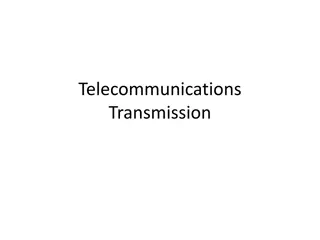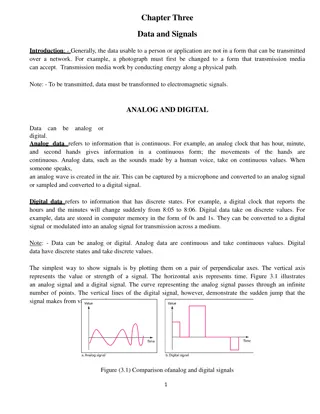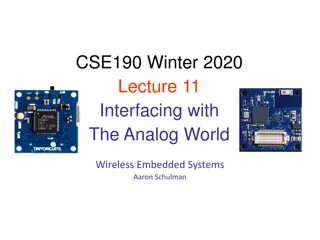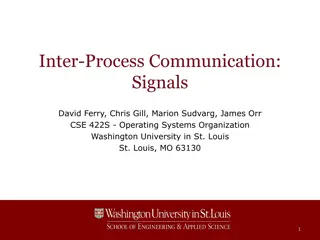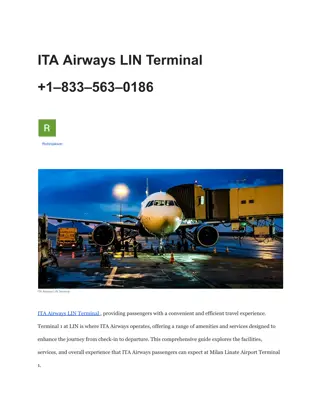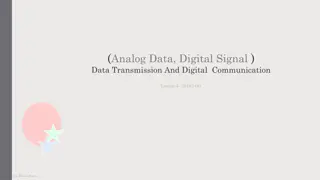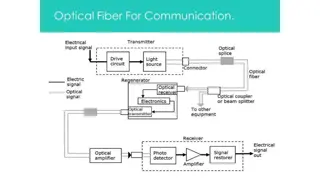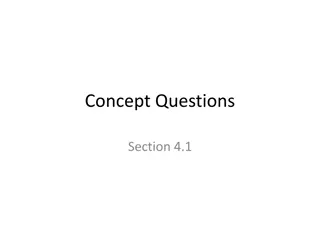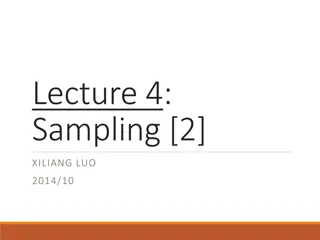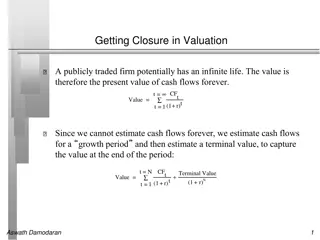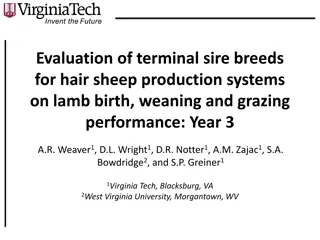Signals and Terminal I/O
In the world of programming, signals play a crucial role in inter-process communication and controlling program behavior. This content delves into how signals inform processes of events, the common signals used, handling signals, catching signals, ANSI C signal functions, and managing signal sets in a process. Dive into the world of signals and terminal I/O control through this informative read.
Download Presentation

Please find below an Image/Link to download the presentation.
The content on the website is provided AS IS for your information and personal use only. It may not be sold, licensed, or shared on other websites without obtaining consent from the author.If you encounter any issues during the download, it is possible that the publisher has removed the file from their server.
You are allowed to download the files provided on this website for personal or commercial use, subject to the condition that they are used lawfully. All files are the property of their respective owners.
The content on the website is provided AS IS for your information and personal use only. It may not be sold, licensed, or shared on other websites without obtaining consent from the author.
E N D
Presentation Transcript
Signals and Terminal I/O Signals and how to control the program behavior in handling signals. Terminal I/O Readings APUE 10.2-10.5, 10.9 - 10.14 1
Signals A form of inter-process communication tells a process that some event occurs the kill command kill l kill s INT pid kill INT pid Type ctrl-C when a program is running (SIGINT) Memory violation (SIGSEGV), etc Divided by 0 (SIGFPE). A process dies (SIGHUP and SIGCHLD). a packet arrives 2
Some Commonly Used Signals SIGABRT, SIGALRM, SIGCHLD, SIGHUP, SIGINT, SIGUSR1, SIGUSR2, SIGTERM, SIGKILL, SIGSTOP, SIGSEGV, SIGILL All defined in signal.h (which includes other related files) man s 7 signal on linprog 3
Signal When a process receives a signal, it performs one of the following three options Ignore the signal Two signals cannot be ignored SIGKILL and SIGSTOP Perform the default operation Ignore the signal exit Catch the signal Informs kernel to call user-defined function when signal occurs We can also block a signal from happening Kernel remembers if a signal occurs and deliver it when we unblock the signal 4
Catch a Signal Similar to interrupt (software interrupt) When a process receives a signal: stop execution call the signal handler routine continue Signal can be received at any point in the program. Most default signal handlers will exit the program. 5
ANSI C signal Function syntax: #include <signal.h> void (*signal(int signo, void (*func)(int)))(int); semantic: signo -- signal number (defined in signal.h) func: SIG_IGN, SIG_DFL or the address of a signal handler SIG_IGN: signore signal SIG_DFL: perform default action Handler may be erased after one invocation this is not well defined, and has different behavior on different OS (example1.c) How to get continuous coverage? Still have problems may lose signals 6
Block/unblock Signal: sigprocmask Manipulate signal sets #include <signal.h> int sigemptyset(sigset_t *set); int sigfillset(sigset_t *set); int sigaddset(sigset_t *set, int signo); int sigdelset(sigset_t *set, int signo); int sigismember(const sigset_t *set, int signo); Manipulate signal mask of a process int sigprocmask(int how, const sigset_t *set, sigset_t *oset); How: SIG_BLOCK, SIG_UNBLOCK, SIG_SETMASK See example2.c, example2a.c, example3.c Try gcc example2.c and gcc ansi Wall pedantic example2.c 7
Block/unblock Signal: sigprocmask The errors/warnings with gcc ansi Wall pedantic example2.c indicate that some non-standard C features are used in the program. To write portable code, we need to find out what features cause these errors/warnings and fix them. The issues are caused by data type for signals and signal related routines. Try man sigismember to find the information Need to define the macro _POSIX_C_SOURCE gcc Wall ansi pedantic D_POSIX_C_SOURCE example2.c Or you can add #define _POSIX_C_SOURCE at the beginning of example2.c and then compile with -Wall ansi pedantic flags. 8
Critical Region For a critical region where you don t want certain signal to come, the program will look like: sigprocmask(SIG_BLOCK, &newmask, &oldmask); . /* critical region */ sigprocmask(SIG_SETMASK, &oldmask, NULL); 9
The sigaction Function Supersedes the signal function + signal blocking #include <signal.h> int sigaction(int signo, const struct sigaction * act, struct sigaction *oact) struct sigaction { void (*sa_handler)(); /* signal handler */ sigset_t sa_mask; /*additional signal to be block during execution of signal handler*/ int sa_flags; /* various options for handling signal */ }; See example4.c and example4a.c (noted the program behavior with multiple signals) 10
The kill Function Send a signal to a process #include <signal.h> #include <sys/types.h> int kill(pid_t pid, int signo); pid > 0, normal pid == 0, all processes whose group ID is the current process s group ID. pid == -1, all processes for which sender has permission to send pid <-1, all processes whose group ID = |pid| See example5.c See example6.c for the use of alarm. 11
Impact of Signals on System Calls A system call may return prematurely See example7.c How to deal with this problem? Check the return value of the system call and act accordingly Check the errno variable. See example7a.c 12
Terminal I/O The semantics of an output operation is relatively simple. Input is rather messy. Two input modes: Canonical mode: the default mode, input line by line Noncanonical mode: input characters are not assembled. We will focus on noncanonical mode When do we use it? What should we expect when using this mode for input? Example: Which input mode does vi use? How about bash or tcsh? 13
The termios Structure In POSIX.1, all the characteristics of a terminal device that we can exam and change are in a termios structure (termios.h) struct termios { tcflag_t c_iflag; /* input flag */ tcflag_t c_oflag; /* output flag */ tcflag_t c_cflag; /* control flags */ tcflag_t c_lflag; /* local flags */ cc_t c_cc[NCCS]; /* control characters */ } 14
Manipulating termios Structure Functions to get and set the fields in the termios structure tcgetattr and tcsetattr; #include <termios.h> int tcgetattr(int fildes, struct termios *termios_p) int tcsetattr(int fildes, int optional_actions, const struct termios *termios_p) optional_actions: TCSANOW, TCSADRAIN, TCSAFLUSH 15
Noncanonical Mode Turn on the noncanonical mode: Unset the ICANON flag in c_lflag myterm.c_lflag & = ~ICANON When will a read return using the noncanonical mode for input? Number of characters(VMIN) Time (VTIME) Specified in the c_cc field c_cc[VMIN] = ???, c_cc[VTIME] = ??? VMIN > 0, VTIME > 0 VMIN = 0, VTIME > 0 VMIN > 0, VTIME = 0 VMIN = 0, VTIME = 0 See example8.c and example9.c 16





